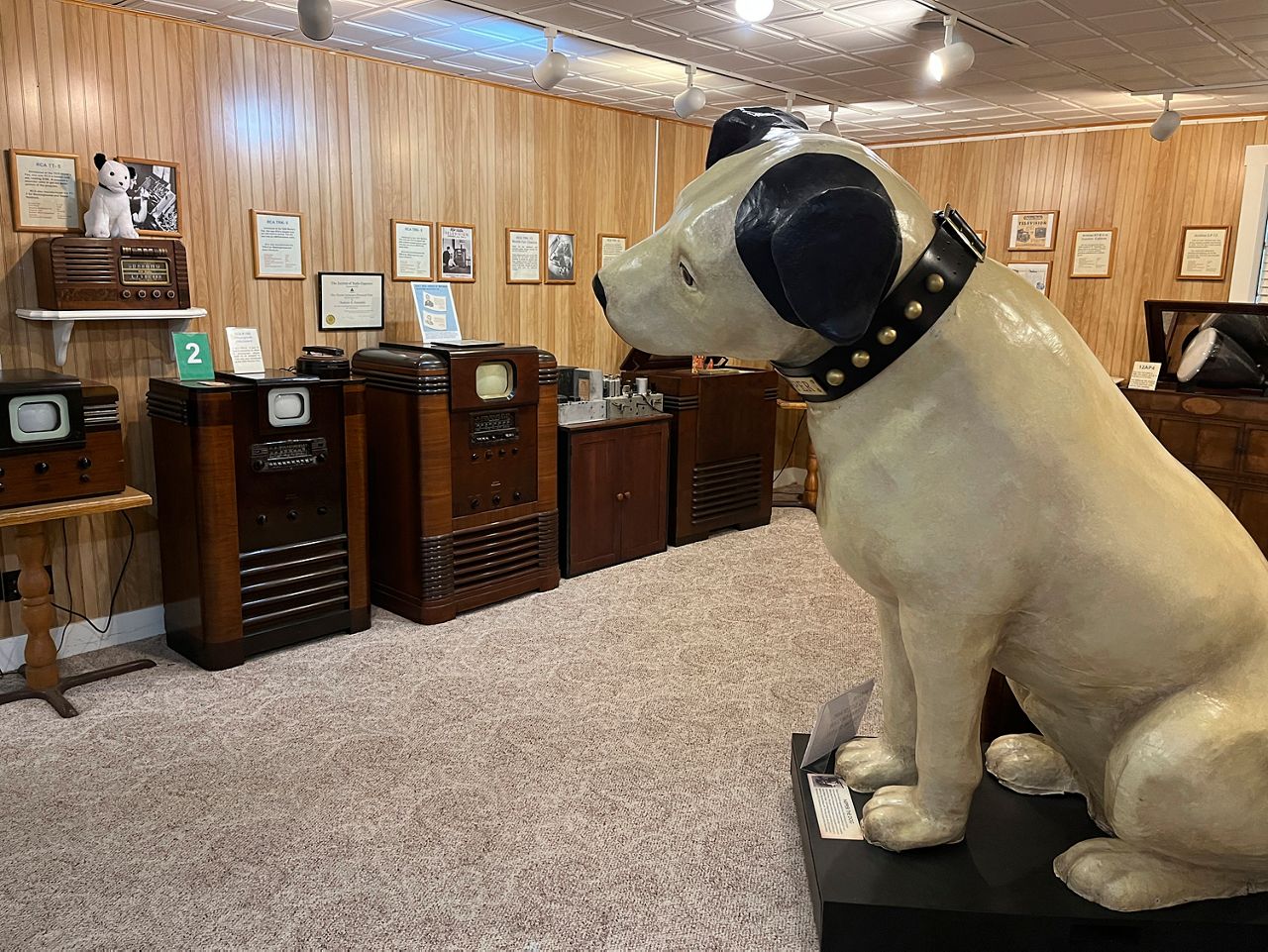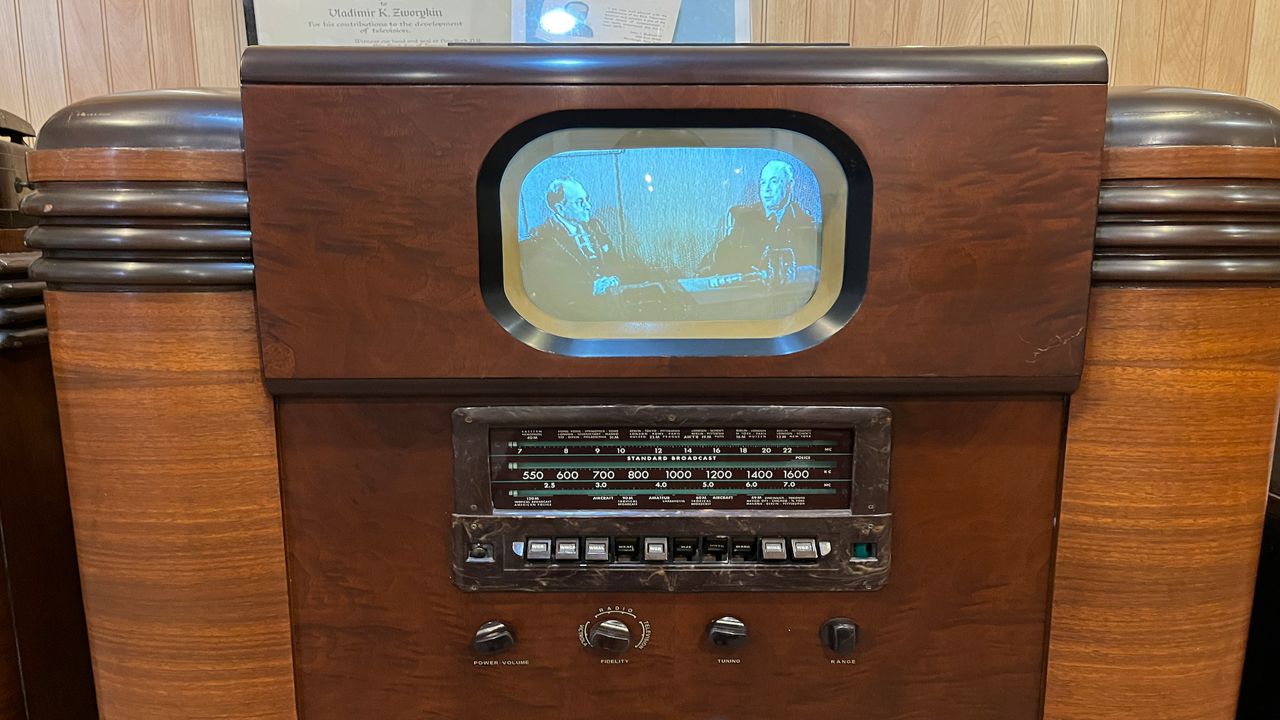The Early Television Museum in Hilliard, Ohio has one of the world’s largest collections of televisions in the world, with about 180 sets on display and more in storage. Founded by collector Steve McVoy, now 80, the museum is rivaled in size in North America only by the MZTV Museum of Television in Toronto.
The museum features TV sets from as long ago as the 1920s, and displays post-World War II, black-and-white sets and first-generation color sets from the early 1950s. Also on display is collector Dave Johnson’s early television picture tubes and rooms full of early TV studio equipment.
"Everybody thinks TV started in the '50s or the late '40s, McVoy said. “Almost nobody knows it existed before World War II and even goes back to the '20s.”
McVoy said he started the museum because of an interest in early television technology, which was “pretty boring” from the 1960s on, when TVs were little more than “big things in plastic cabinets.”
"So many of the sets were incredible to see in their original form," said Doron Galili, a research fellow in media studies at Stockholm University and author of "Seeing by Electricity: The Emergence of Television, 1878 – 1939" (Duke University Press).
Galili, who visited the Early Television Museum in 2016, said the museum gives visitors "a better sense not only of the technological aspects of television history but also of its place within popular culture, and modern design and material culture."
McVoy said he became fascinated with TVs as a child and tinkered with his family’s set, “much to my parents’ dismay.” He also advertised TV repair skills, pulling a little red wagon around the neighborhood.
"Nobody accepted my offer," McVoy said, admitting that as a 10-year-old he didn’t have any TV repair skills.
Years later, he did learn repair skills working in a television repair shop, and in the mid-1960s, opened his shop, Freedom TV, he said. He offered repair services and TV antenna installation on apartment buildings and motels.
McVoy then transitioned to cable-television, forming Micanopy Cable TV, followed by Coaxial Communications and Telecinema, he said.
In 1999 McVoy sold his cable holdings and started collecting old television sets, his first foray into collecting, he said.
McVoy’s first collectible TV came from through an eBay sale — an RCA TRK 12, introduced during the 1939 World's Fair and originally retailing for $600, he said. Although the set was missing parts, he paid about $1,000 for it.
"A complete one would have cost five or six thousand,” he said. “The pre-war sets are very valuable."

McVoy refurbished the TRK 12, and from there, he not only collected more sets, he met with other collectors who shared his passion.
The idea of starting a museum came, in part, because of his wife’s annoyance at TV parts lying around the house, he said. It also was because the collectors he met kept their sets in basements and attics.
McVoy opened the nonprofit foundation/museum in 2002 in a 6,000-square-foot former warehouse. Each room of the museum features an audio guide he narrates, with some of the TVs configured to play old TV programs.
"We have [an example of] virtually every set that is available," McVoy said.
According to McVoy’s research, in 1947 there were about 200,000 sets in the U.S., and by the end of 1953, there were about 18 million, with audiences tuning in regularly to "I Love Lucy," which began airing in 1951, "The Honeymooners" in 1955.
Color sets were introduced in 1954, with sales initially low, in part, because of cost, he said, but by the early 1970s color televisions outsold black-and-white ones.
One set McVoy said he would like to have is a set made by electronic-television pioneer Philo Farnsworth in the late ‘20s or early ‘30s.
"Only three still survive as far as we know and they're all already in other museums," he said. "If a fourth ever shows up, we'd go to our donors and would be able to get it."
The Early Television Museum is open Saturdays from 10 a.m. to 6 p.m. and Sundays from noon to 5 p.m.
The museum is located at 5396 Franklin St. in Hilliard, Ohio, a suburb northwest of Columbus. Visit the website for more information.



